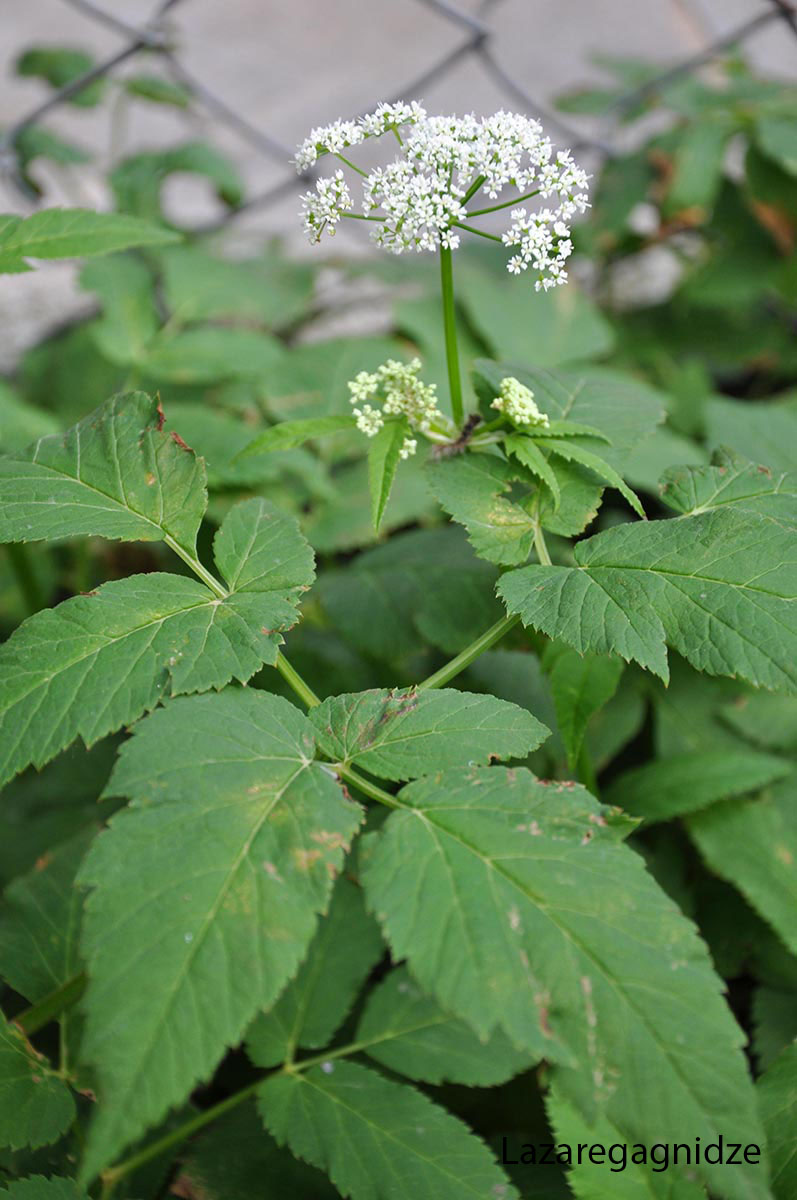Bishop's weed identification and control
Aegopodium podagraria, Apiaceae

Bishop’s weed, also called goutweed, is a creeping, herbaceous perennial in the carrot family, 1.5 to 3 feet tall, often with variegated leaf color, but can revert to solid green outside of cultivation. Small white flowers in umbrella-shaped clusters 2-5 inches across rise above the leaves on tall stalks, usually in June. Leaves are compound (divided into leaflets), upper ones with 3 sets of 3 leaflets on short petioles (leaf stalks), lower ones usually with 9 leaflets and long petioles (leaf stalks). Leaflets are toothed, pointed at the tip and rounded or heart shaped at the base. The plant spreads by fast growing underground roots called rhizomes as well as seeds.
It was brought to North America as an ornamental and is used as a low maintenance ground cover. When it escapes into natural areas, it is aggressive, forming dense, impenetrable patches that displace native plants and inhibit the establishment of native tree seedlings. Highly shade tolerant, it is capable of invading closed-canopy forests.
It is considered an invasive plant in King County and is on the King County Weeds of Concern list. Control is recommended where natural resources are being protected or as part of a stewardship plan. Even a small piece of rhizome can re-sprout into a new plant, so take care to dispose of all plant material carefully and clean your clothing and shoes after going through or working with a patch of bishop’s weed.
Report noxious weeds in King County, Washington
- Please notify us through our online infestation form
Locate noxious weeds in King County, Washington
- Use our interactive noxious weed map
Related information
Related agencies
Program offices are located at 201 S. Jackson St., Suite 600, Seattle, WA 98104. To contact staff, see the Noxious Weed Control Program Directory, send an email, or call 206-477-WEED (206-477-9333).

 Translate
Translate